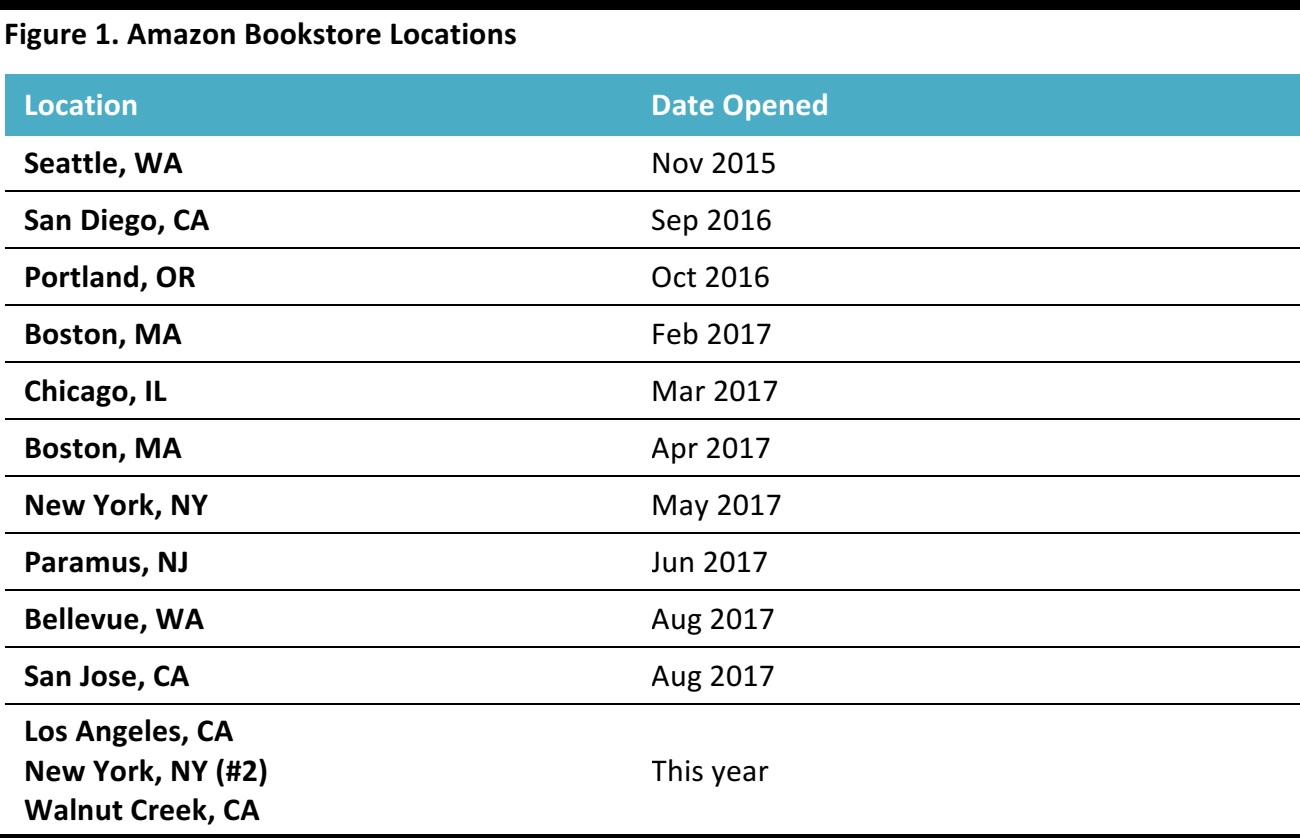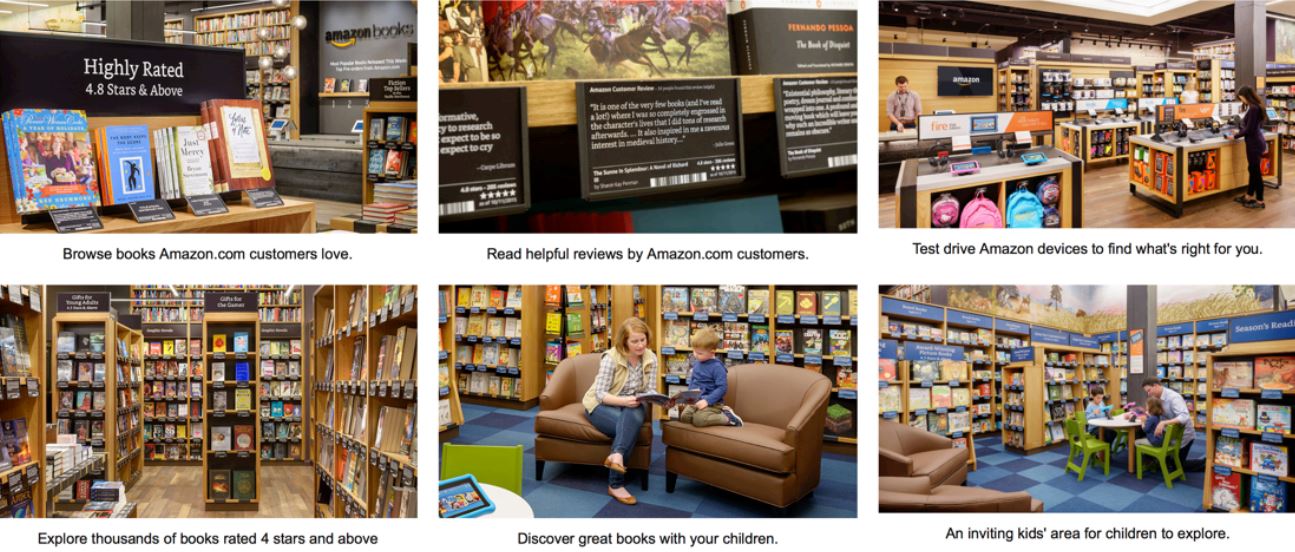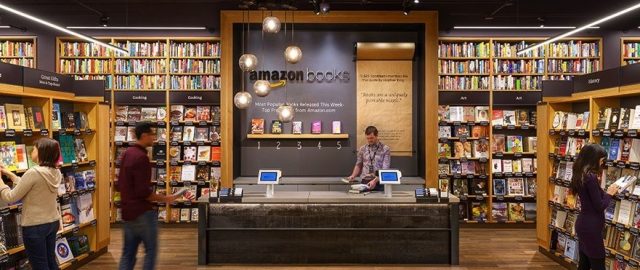Overview
Less than two years after launching its first brick-and-mortar bookstore, Amazon announced the opening of its ninth and tenth locations this week, in Bellevue, WA, and San Jose, CA. The company plans to add an additional three stores by the end of the year.
Amazon bookstores differ from traditional bookstores in several ways: the selection of books on offer are curated using data from Amazon’s online store and books are recommended based on reviews pulled from Amazon.com. Product displays mimic those on the website, too, featuring, for example, “If you like [this], then you’ll like [this]” recommendations.
The stores also feature collections of highly rated books, which are displayed with signs such as “Highly Rated Science and Nature Books, 4.5 Stars & Above.” Such displays reference how customers rate items they buy on Amazon.com, and include collections of local favorites and the most highly anticipated books.
The book displays at the stores mirror the look on Amazon.com. The covers face forward and each book includes a rating of zero to five stars and a quote from a review taken directly from the website. The stores feature a tightly curated selection of books and Amazon makes no attempt to offer the same broad selection as traditional bookstores.
There are also no prices listed. To find out the price of a book, the customer must scan a barcode with the Amazon app using a smartphone camera. To check out, the customer swipes a credit card or scans a barcode. For Prime members, the register recognizes a known credit card and applies the Prime discount automatically. All non-Prime members pay retail prices.
Electronic Devices
Amazon bookstores are similar to chain bookstores in that they carry items such as coffee makers, cellphone cases and consumer electronics, the latter of which naturally focus on Amazon’s devices. In-store shoppers can try out the various Amazon products on display, including Kindle e-readers, Fire Tablets, smart-home gadgets such as Alexa and more.
The company has started training associates about Alexa and other electronics, so customers will be able to visit Amazon bookstores to ask employees to help them with smart-home device issues, for example.
Amazon has now opened 10 bookstore locations and plans to add another three by the end of 2017.
 Source: Amazon.com
Source: Amazon.com
Amazon can use the data from customer purchases and preferences on its website to curate and fine-tune the stores’ inventories and, of course, it can collect data from the bookstores. Moreover, the stores serve as a showroom for all of Amazon’s electronic gadgets that were previously only available online.
 Source: Amazon.com
Source: Amazon.com
Amazon’s bookstore initiative shows that the company is dedicated to establishing a physical presence. The increased interest in the brick-and-mortar retail world was recently put in the spotlight by Amazon’s $13.7 billion deal to acquire Whole Foods Market. Physical retail stores offer certain advantages—including the ability to have a more personal relationship with customers face-to-face.


 Source: Amazon.com
Source: Amazon.com Source: Amazon.com
Source: Amazon.com